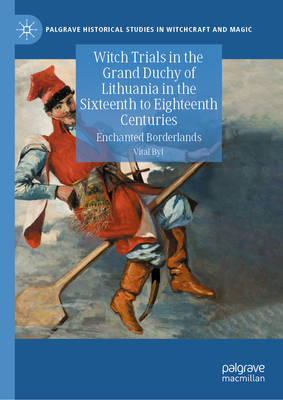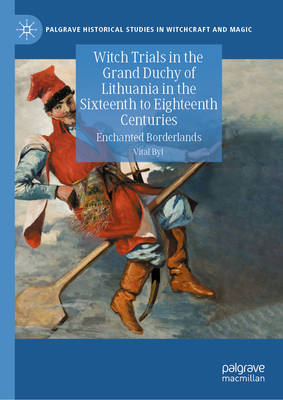
- Afhalen na 1 uur in een winkel met voorraad
- Gratis thuislevering in België vanaf € 30
- Ruim aanbod met 7 miljoen producten
- Afhalen na 1 uur in een winkel met voorraad
- Gratis thuislevering in België vanaf € 30
- Ruim aanbod met 7 miljoen producten
Zoeken
Witch Trials in the Grand Duchy of Lithuania in the Sixteenth to Eighteenth Centuries
Enchanted Borderlands
Vital Byl
€ 244,45
+ 488 punten
Omschrijving
This book explores witchcraft accusations as bizarre and violent reflections of the tensions, fears, and fantasies within one of Early Modern Europe's most culturally diverse societies. At the crossroads of Latin and post-Byzantine traditions, Western and Eastern Christianity, and the forces of the Reformation and Counter-Reformation, the Grand Duchy of Lithuania offers a rare perspective on the Early Modern witch-hunting phenomenon. Through twelve thematic chapters, this book explores the transformation of local magical beliefs and imported ideas into a peculiar legal offence and a culturally specific tool for resolving social tensions and conflicts. The book traces how Orthodox traditions, Catholic confessionalisation, and political changes intertwined with literary and folk dark fantasies to shape the distinctive character of Lithuanian witch-hunting. It investigates legal frameworks, courtroom practices, community dynamics, and the varied roles of elites and subjects, women and men, dominant churches, and religious minorities such as Jews and Muslims in sustaining or resisting the culture of accusation. Grounded in a wide range of sources and adopting an interdisciplinary approach, this book offers a sophisticated portrait of how power, fear, and cultural diversity interacted in a complex Early Modern society.
Specificaties
Betrokkenen
- Auteur(s):
- Uitgeverij:
Inhoud
- Aantal bladzijden:
- 296
- Taal:
- Engels
- Reeks:
Eigenschappen
- Productcode (EAN):
- 9783032006707
- Verschijningsdatum:
- 4/01/2026
- Uitvoering:
- Hardcover
- Formaat:
- Genaaid
- Afmetingen:
- 148 mm x 210 mm

Alleen bij Standaard Boekhandel
+ 488 punten op je klantenkaart van Standaard Boekhandel
Beoordelingen
We publiceren alleen reviews die voldoen aan de voorwaarden voor reviews. Bekijk onze voorwaarden voor reviews.








